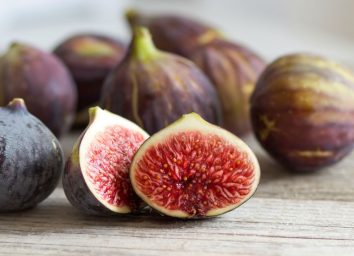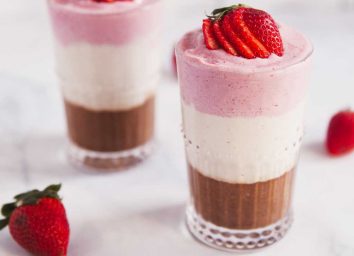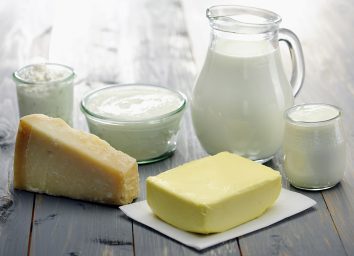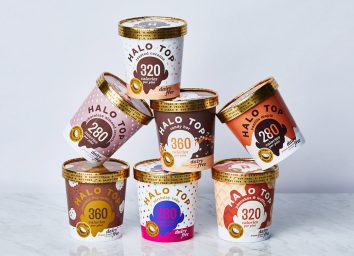22 Genius Tips To Cut Back on Dairy, According to Experts
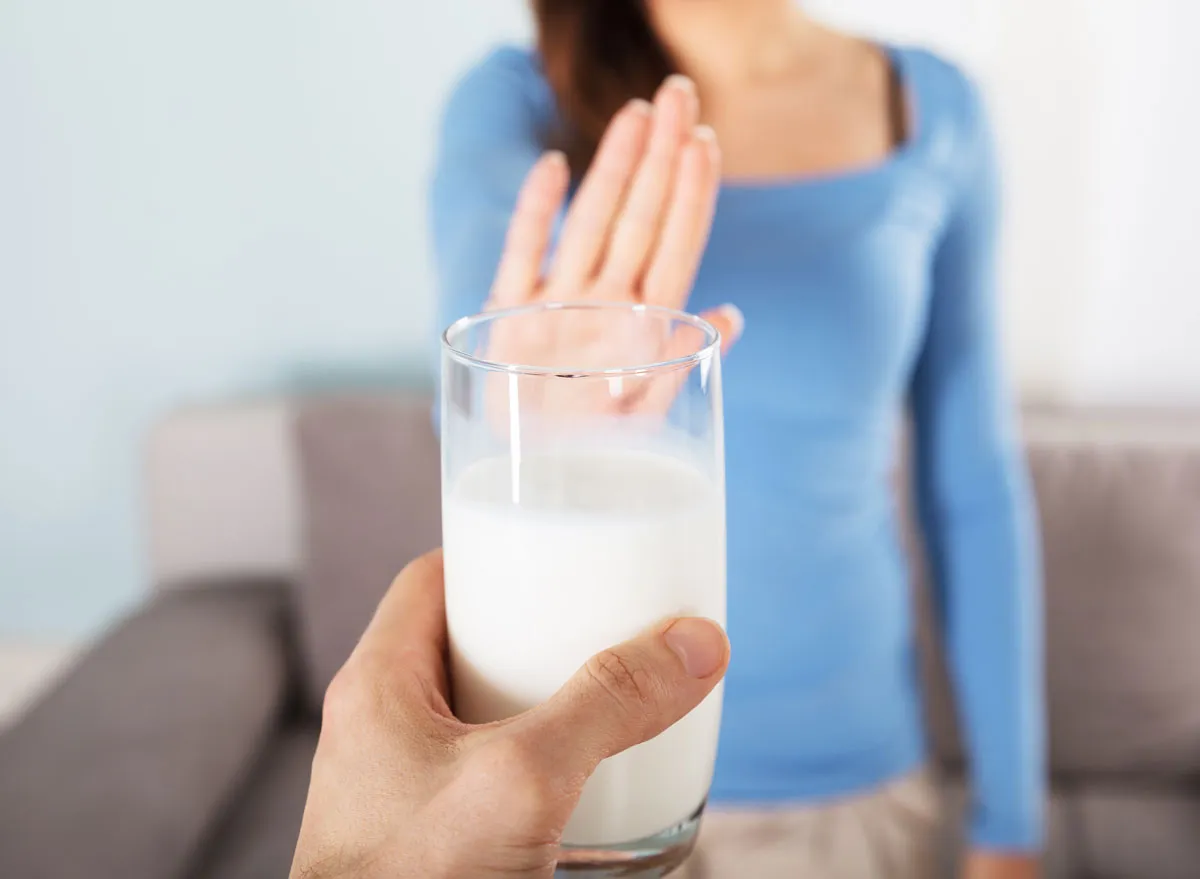
There's a big question mark surrounding dairy and the place it should (or should not) have in your diet. Some of us are truly allergic or lactose intolerant and have no choice but to cut it out altogether. But for the rest of us, one of the biggest concerns surrounding dairy is that it can be highly caloric—and addictive. Who doesn't love devouring a dish overflowing with melted cheese? That's not ideal if you're trying to lose or maintain a lower weight.
Dairy has also been proven to cause some minor discomfort like "low-grade inflammation or it may clog nasal passages," explains David Nico, PhD. Studies suggest that dairy can also be linked to skin issues with acne and eczema, so cutting back on dairy can be one way to try and soothe aggravated skin.
So, here's the bottom line—you don't have to completely nix dairy from your diet. You're actually in control of how much you have every day as there's no right or wrong amount if you're not severely allergic or lactose intolerant. It's up to you to decide which swaps are deal-breakers and to experiment with different amounts each day to see how you feel. If you need your cream in your coffee, then go for it and see if you could live without a slice of cheese on your sandwich instead. If you want to learn how to go dairy-free completely, great! These tips will also help you transition to a dairy-free diet.
To make it even more manageable for you, we went to the experts for their tips on the best ways to cut back on dairy and maybe even go dairy-free! Read on, and for more on how to eat healthy, you won't want to miss these 21 Best Healthy Cooking Hacks of All Time.
Butter Up With Ghee
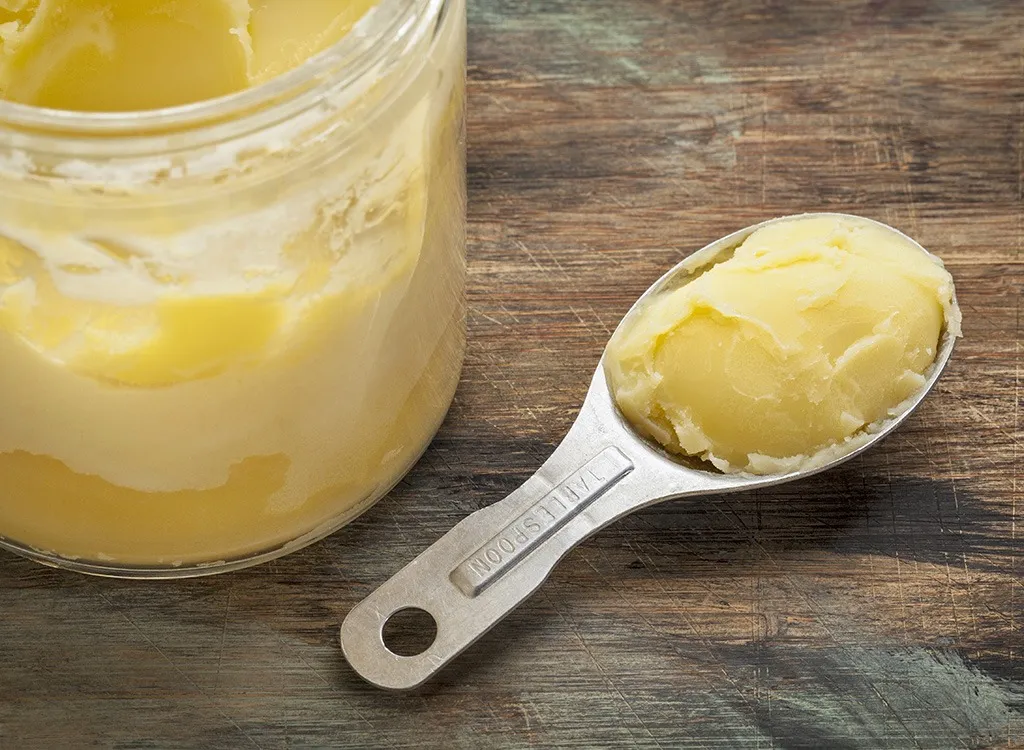
If you have friends on the Paleo diet then you may have heard them talk about making a pot of ghee for the week. But what the heck is it and why is it on an essentially dairy-free diet like Paleo? "Ghee is essentially clarified butter. If you boil butter in a pot, the milk solids rise to the top. Once you skim off all the milk solids at the top, what remains is ghee," explains Staci Shacter, MS, RD, LDN of Carillon Miami Beach and author of The Meat & Potatoes of a Healthy Meal Plan…no bun intended. "Most people who have to be dairy-free can still have ghee. In fact, there is research supporting the use of ghee for psoriasis."
Watch What Goes In Your Coffee

While coffee on its own is actually really good for you and filled with antioxidants, what you add to it is the problem. And if you're trying to cut back on dairy, then your morning Joe is the perfect place to start. "Try Silk Almond Milk Creamer, Califia Almond Milk Creamer, or So Delicious Coconut Milk Creamer. You may also like using regular almond, cashew, or coconut milk to replace milk or cream. If you use skim milk in your coffee, rice milk will be the closest substitute," explains Shacter.
And so many brands are now making coffee coolers that use almond or coconut milk. If you love cream or Half and Half in your cup, try keeping canned coconut milk in the fridge. "The cream rises to the top, and looks similar to a thick whipped topping," says Shacter. And don't forget that Starbucks now offers coconut milk as a dairy-free option. But one thing you should not grab, according to Shacter, is non-dairy creamer. "It typically employs trans fats or other unhealthy ingredients."
Use Yeast Extract Instead of Cheese
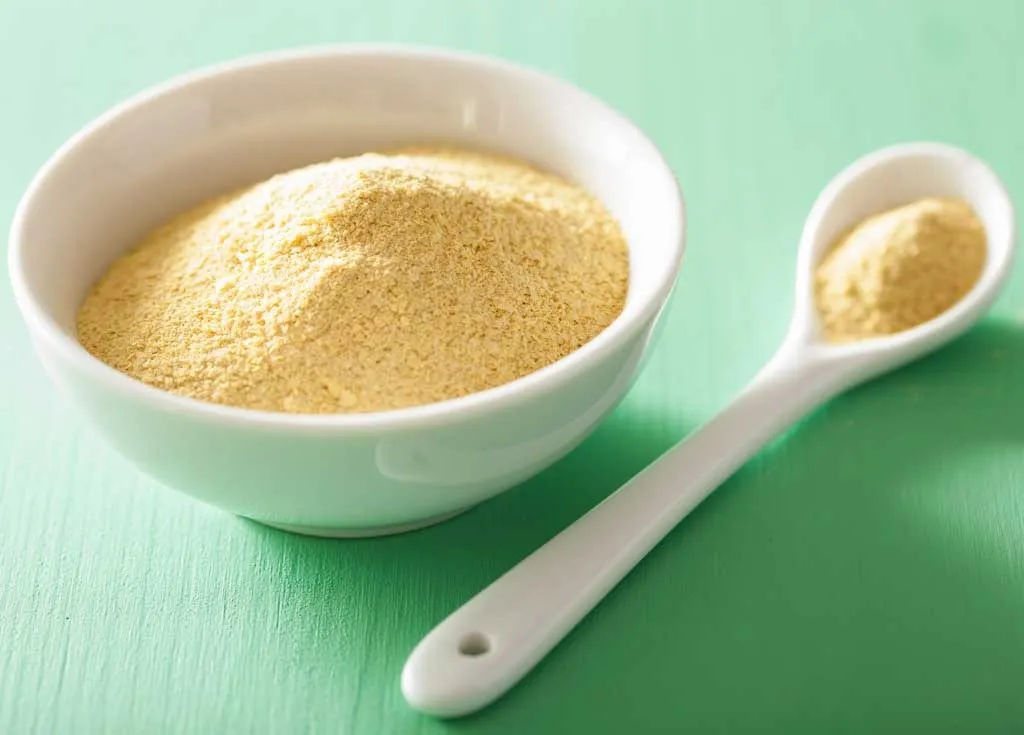
Nutritional yeast (also known as nooch) is a healthy yeast that is high in B-vitamins and can make things taste like cheese when it is added to recipes. "It's great for homemade gluten-free and dairy-free recipes like macaroni-and-cheese, polenta, bean dips, mashed potatoes, organic popcorn, cooked vegetables, kale chips, roasted nuts and salad dressings," Shacter says. Want to lighten up your chicken wings in a really delicious way? Shacter recommends reheating leftover chicken in a frying pan with Frank's RedHot sauce, 1-2 tablespoons of nutritional yeast, and then a little olive oil, avocado oil, or ghee.
Make Your Own Salad Dressings
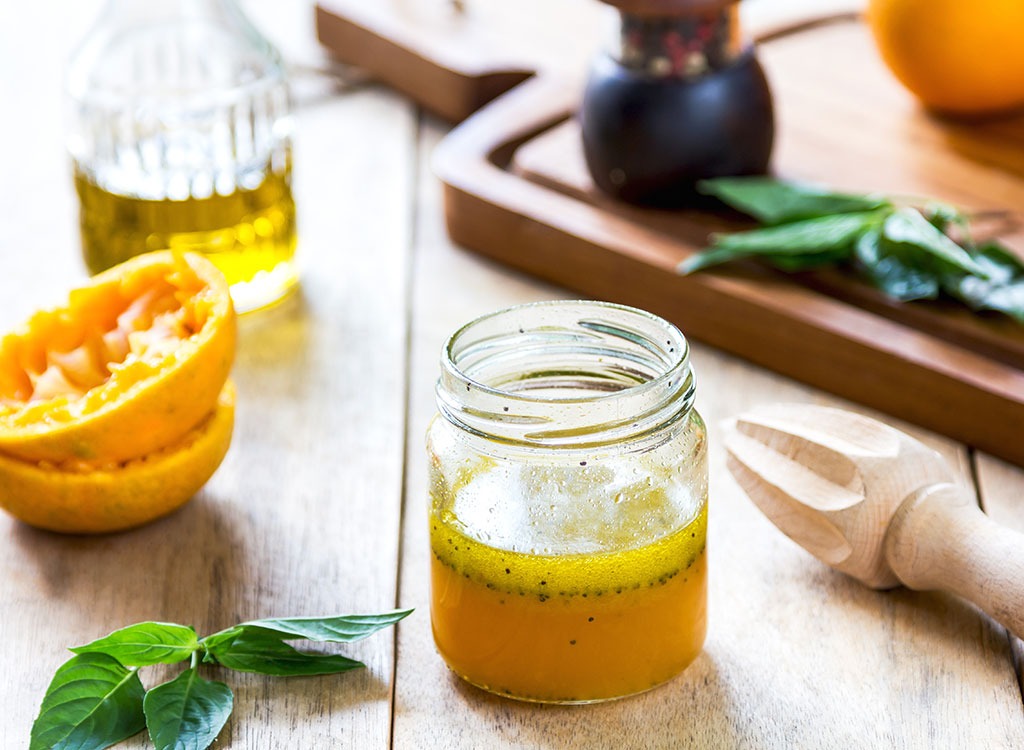
Creamy salad dressings like ranch or bleu cheese are tough to resist but you can easily make your own dairy-free version if this is an area you want to cut back. "Blend nut cheese [like almond] or a raw nut paté from the health food store in the food processor, and add fresh garlic, lemon, spices, and water to thin the mixture out," recommends Shacter. "Avocado is also great to add to salad dressing recipes to make them taste creamier." Inspired? Check out our healthy salad dressing tips.
Switch Up Your Smoothie
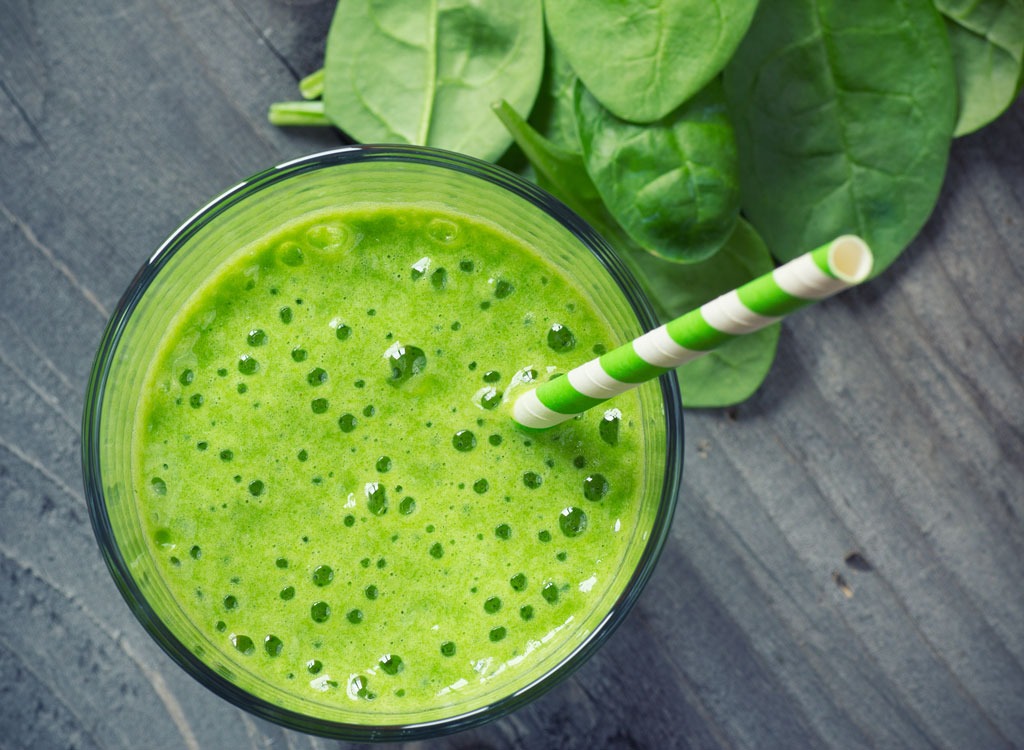
If a hefty serving of full-fat yogurt is usually in your morning smoothie, this is a great place to cut the dairy—and you may not even know the difference! "Almond or coconut milk is a great alternative to giving it the 'creamy feel' that people really desire," says Ken Immer, CCHE and President & Chief Culinary Officer of Culinary Health Solutions. "Frozen, soaked nuts and water also work instead of yogurt or milk, too."
You Can Still Say Cheese
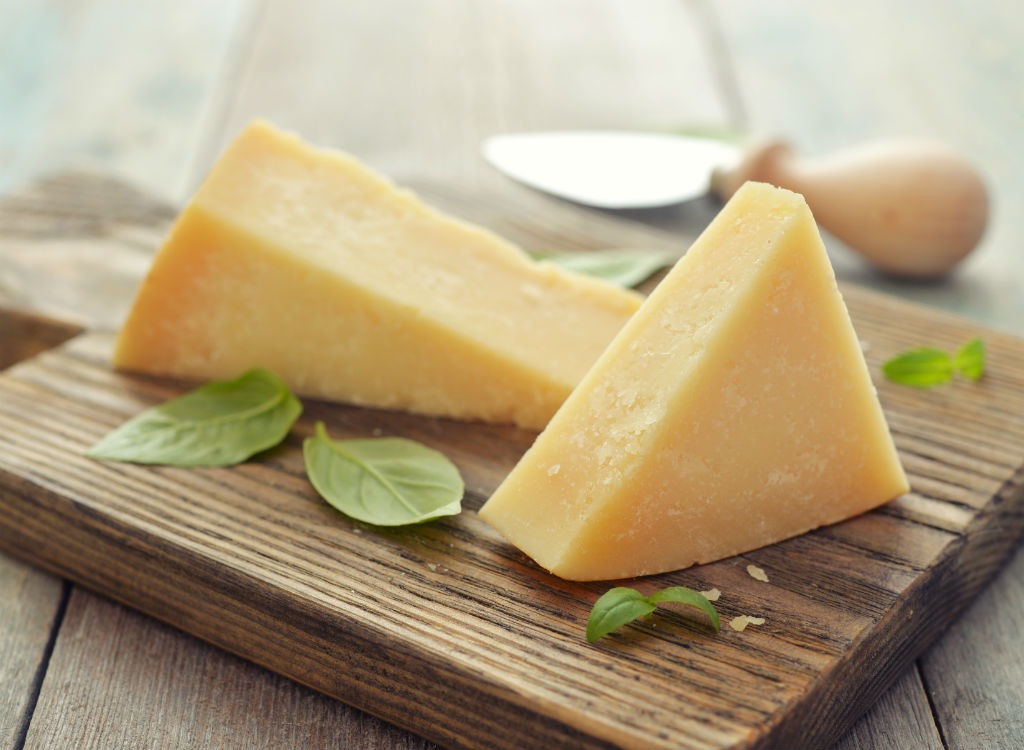
Cheese, glorious cheese. This is a doozy when it comes to cutting back on dairy because who wants to give up things like pizza and grilled cheese sandwiches? "Thankfully, there are many alternative options these days that can satisfy your 'need for cheese,' says Torrie Yellen, RD at DeliverLean. "Try spreading soy cream cheese onto your toast in the morning or consider blending your own cashew cheese, which is extremely versatile and easy to make." But if nut or soy cheese isn't your thing, there's some very good news: hard cheeses such as real Parmigiano-Reggiano are higher in protein, calcium, and lower in fat than softer cheeses like cheddar or Swiss. And according to Yellen, hard cheese can usually be enjoyed by those that are lactose intolerant because "most of the lactose is drained off in the cheese making process."
Yogurt Alternatives
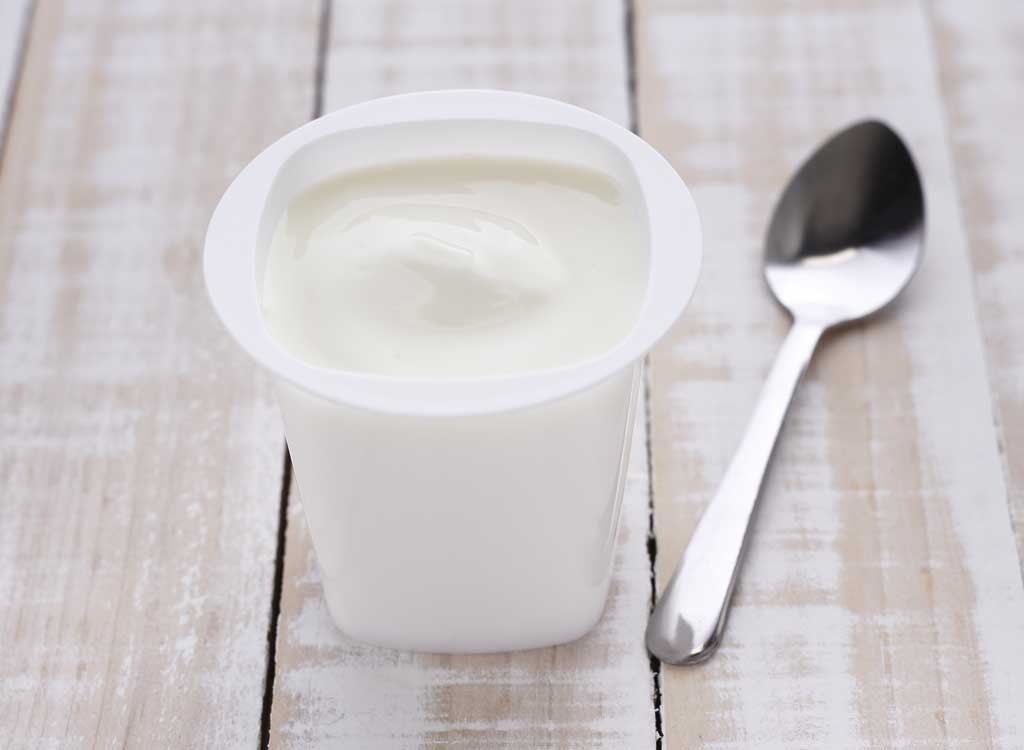
Soy and coconut yogurt are types of yogurt stocked in almost all major grocery stores if you want to ditch the dairy that you usually have for breakfast or an afternoon snack. "Ty to find the plain varieties to limit added sugars," Yellen instructs. "Also, soy yogurt will have much more protein than the coconut version." Once you find one you like, spruce up these yogurt alternatives with fresh fruit and a handful of nuts.
Lighten Up Your Cooking Habits
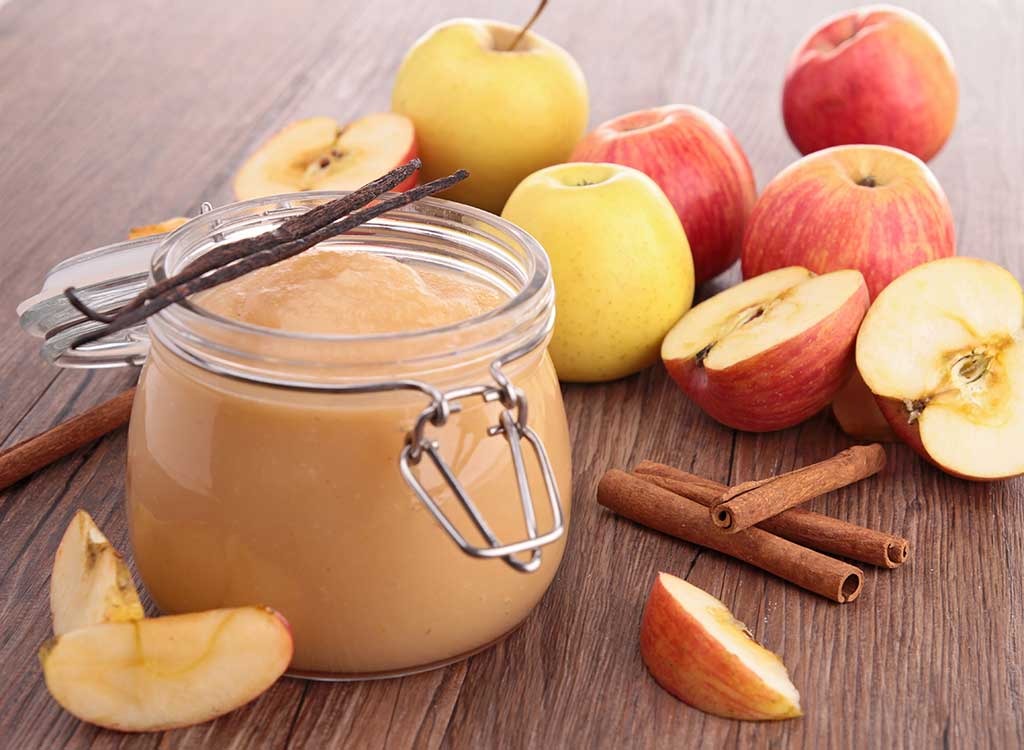
It can become a habit to cook with certain fats or oils—especially butter. We already talked about ghee as an alternative but realize that in a pinch, that's not for everyone. "What could replace butter in your famous brownies, or in mashed potatoes? There are many unique substitutes out there that can taste just as wonderful," says Yellen. "Try using one cup of mashed banana instead of butter in your baking recipe, or almond milk instead of regular milk. Instead of butter and cream, use unsweetened soy milk and extra virgin olive oil to whip up fluffy mashed potatoes."
You Can Still Scream For Ice Cream
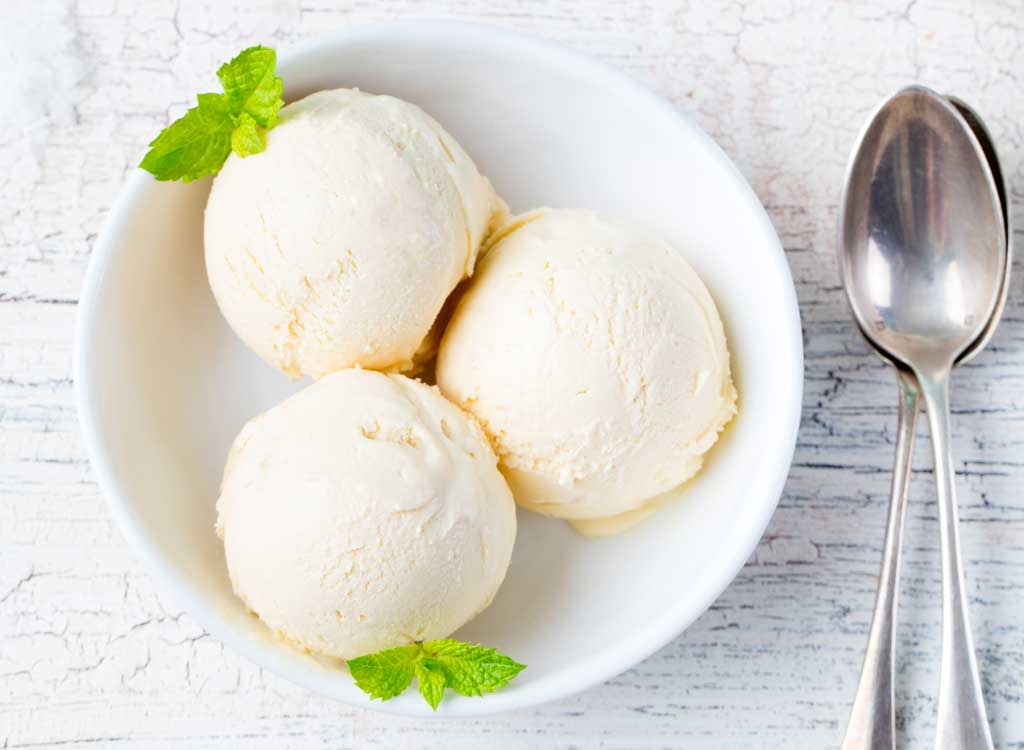
"There are some great dairy-free ice creams on the market, such as Rice Dream or Tofutti (soy-based)," recommends Yellen. "Recently, Ben and Jerry's launched a new line of vegan ice cream made with almond milk. Classic flavors like Chocolate Fudge Brownie and Chunky Monkey can now be enjoyed dairy-free!" And if in a pinch, Marissa Ciorciari, MS, RD, LD/N, CLT and Carillon Miami Beach Functional Nutritionist, recommends using frozen and blended bananas with or without other frozen fruit to make a 'nice-cream' dessert treat.
Switch Up Your Sandwich Toppings
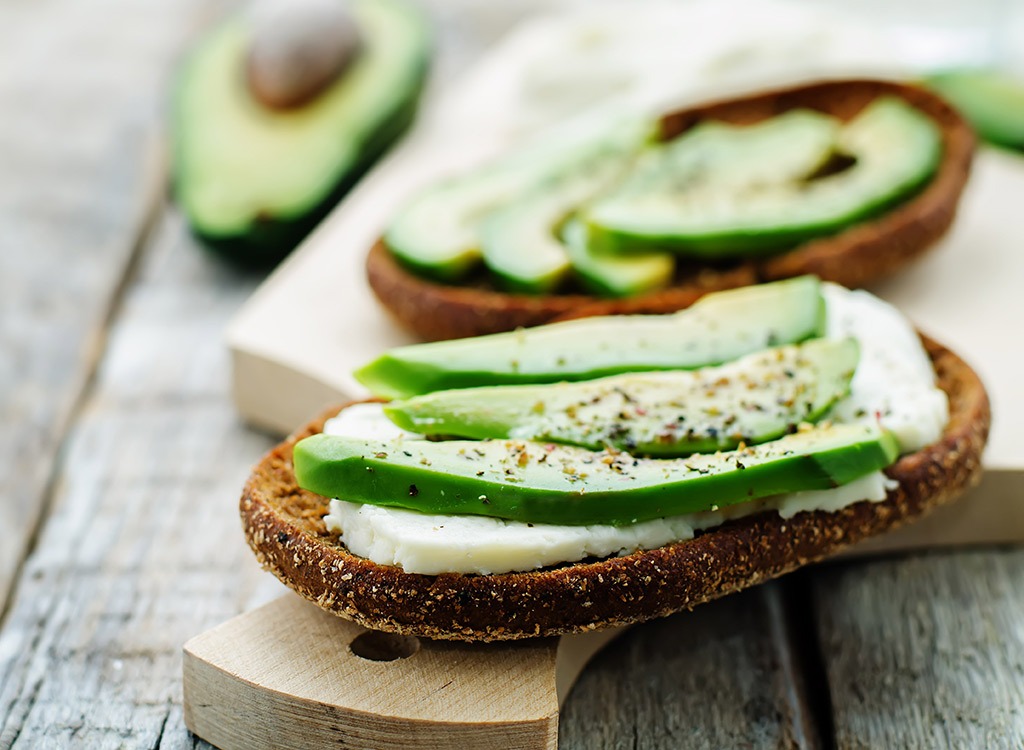
We know; once again, cheese would make something even better. But if you're not into nut cheese or just want to go cold turkey on the stuff for at least one meal, your lunchtime sandwich is another great place to ditch the dairy. "Make your sandwich just as satisfying by toasting your bread with Earth Balance dairy-free spread, and top it off with some ripe avocado instead of the usual cheese slice," says Yellen.
Un-Load Your Potatoes
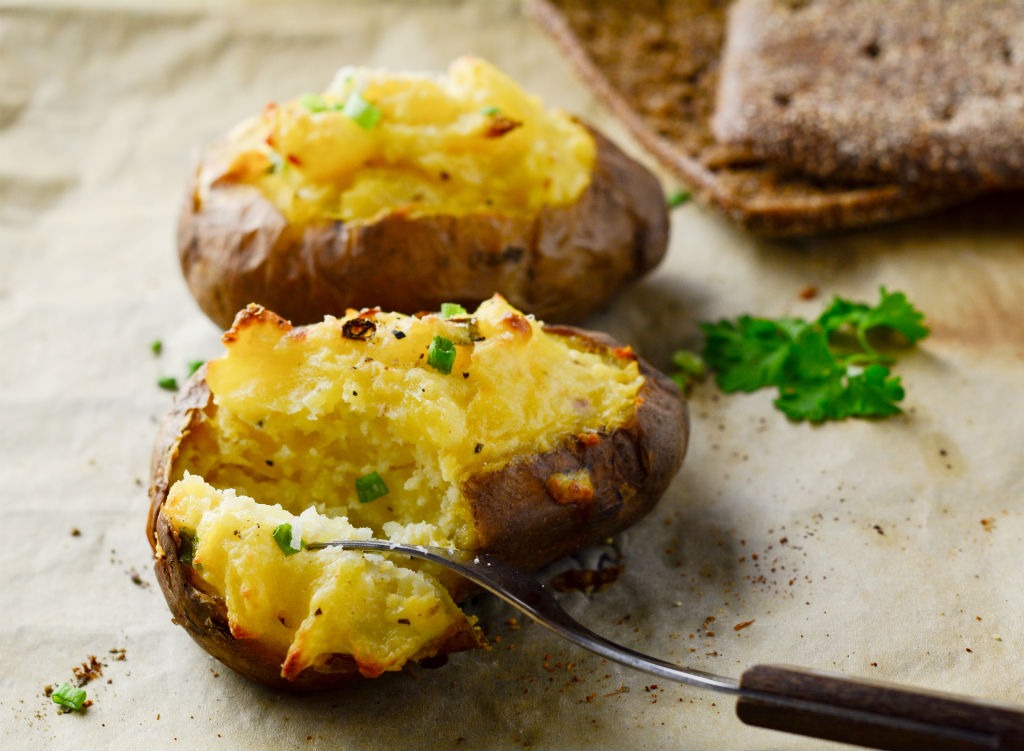
Loading up a baked potato with sour cream—and, of course, cheese—is both a diet-derailing move and a dairy danger. If you can give up one but not other, then follow Yellen's advice and ditch the sour cream for fresh salsa or soy sour cream like the one by Vegan Gourmet.
Rethink Your Snacks
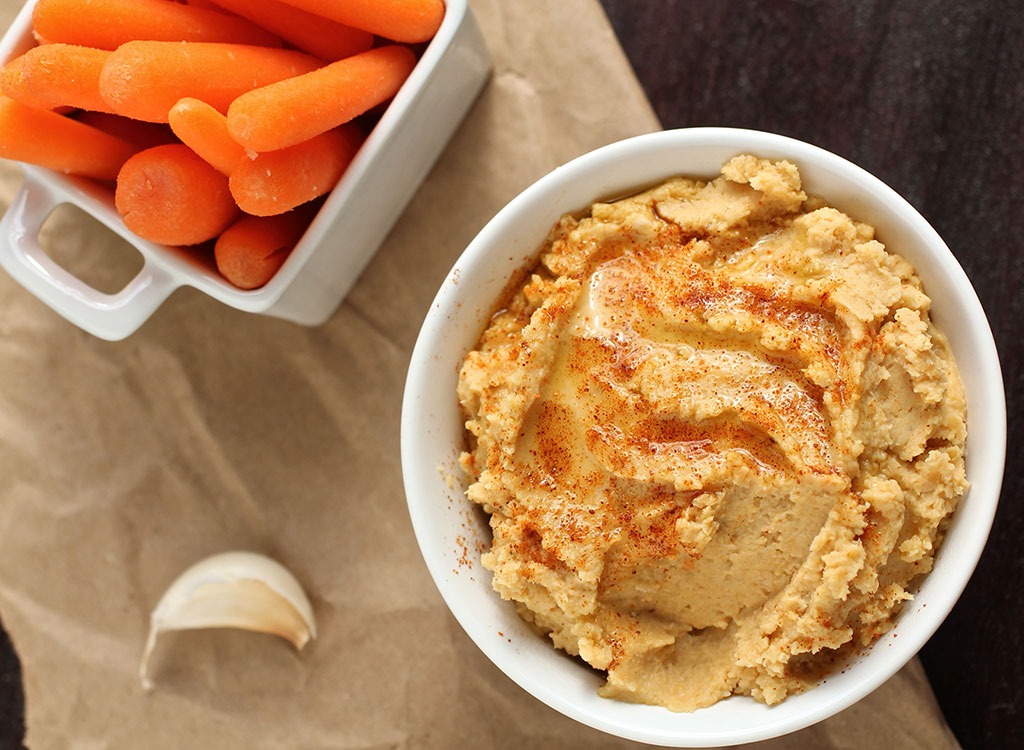
Instead of reaching for cheese slices or yogurt, Yellen recommends replacing your afternoon snack with a handful of raw almonds or fresh broccoli and carrot crudité with black bean dip for a protein and calcium-rich mini-meal. You can also nosh on the non-dairy options among these high-protein snacks to keep your hunger at bay.
Rework Your Idea of Nachos
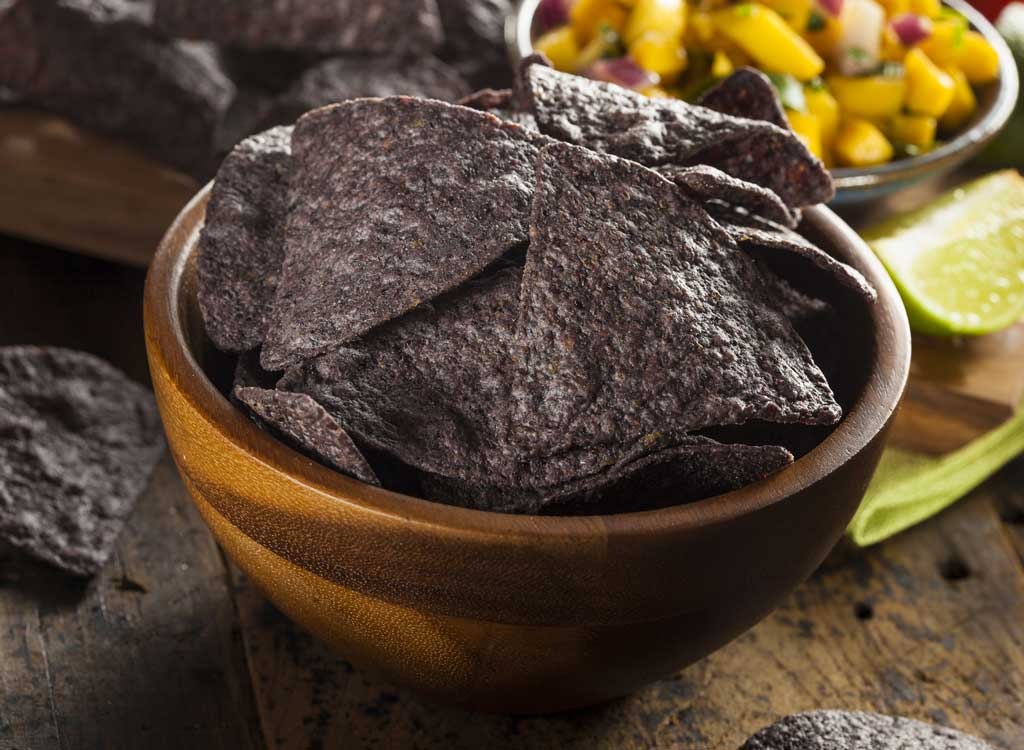
"Try using tahini—a ground sesame paste—instead of cheese to make a healthier nacho cheese dip," says Yellen. "Blend together seven tablespoons of tahini with ¾ cup water, six tablespoons nutritional yeast, two tablespoons of ground cumin, and ½ teaspoon sea salt. Serve with salsa and your favorite tortilla chips."
Update Your Cereal
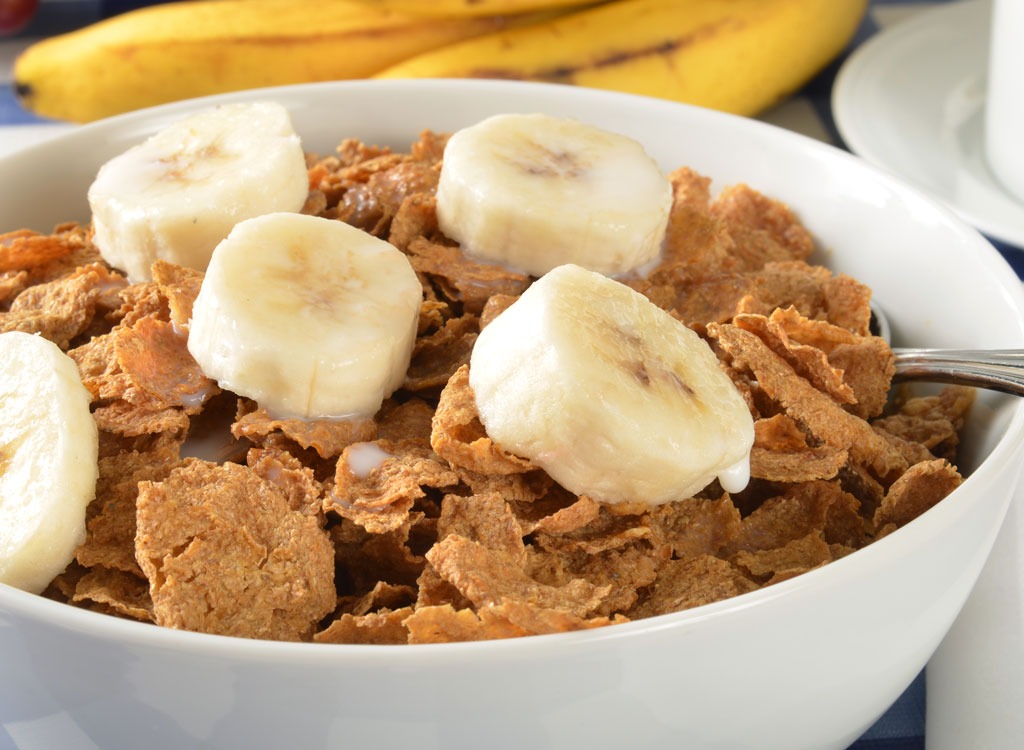
Your morning cereal habit is one of the easiest meals of the day to lower your dairy intake. "Swap out milk for unsweetened, non-dairy alternative 'milks' such as those made of coconut, almond, chia, oat, hemp, cashew, or quinoa," says Ciorciari. "Look for the labels with the least amount of additives, which are cleaner ingredients in nature."
And if you're really ambitious, you can make your own. Ciorciari says you just need a fine mesh strainer, cheesecloth, or 'nut milk bag.' Soak one cup nuts or oats for up to 2-8 hours (note oats may incur less soaking time) and blend in high-speed blender with three cups water. Add flavor with a little vanilla or cinnamon if you'd like.
Adjust Your Salad
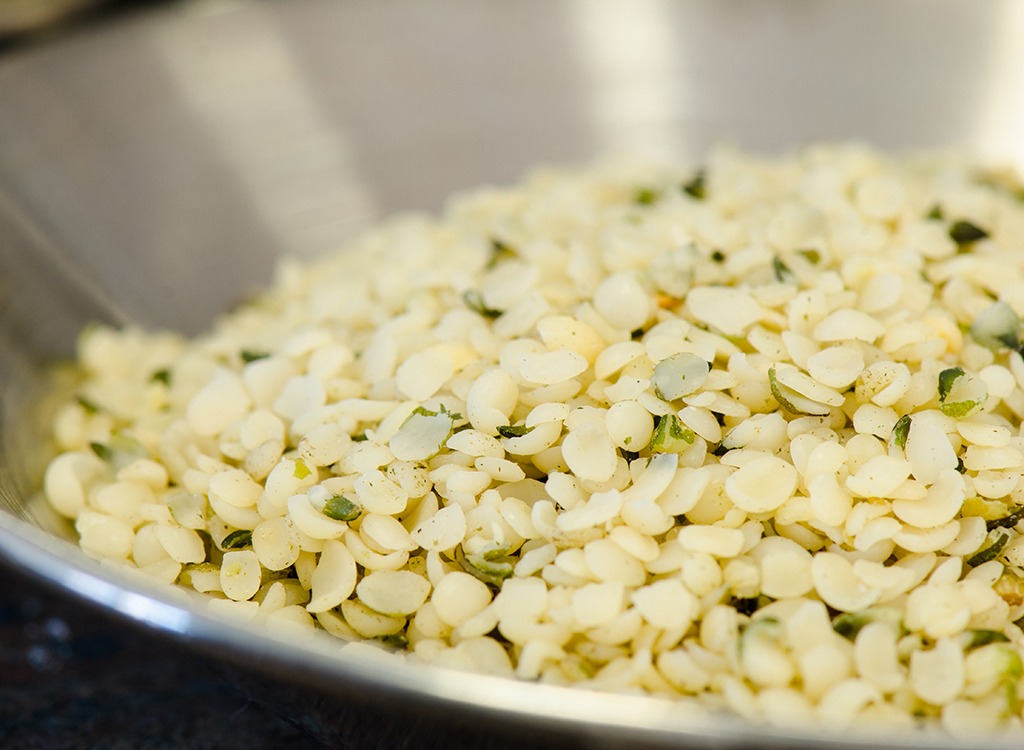
If you're addicted to cheese on your salad. Ciorciari recommends trying one or two tablespoons of hemp hearts in place of cheese onto salads. "Their texture and flavor make a nice replacement and give you some extra omega-3 fats, fiber, and protein boost to salads."
Rethink Your Protein Powder
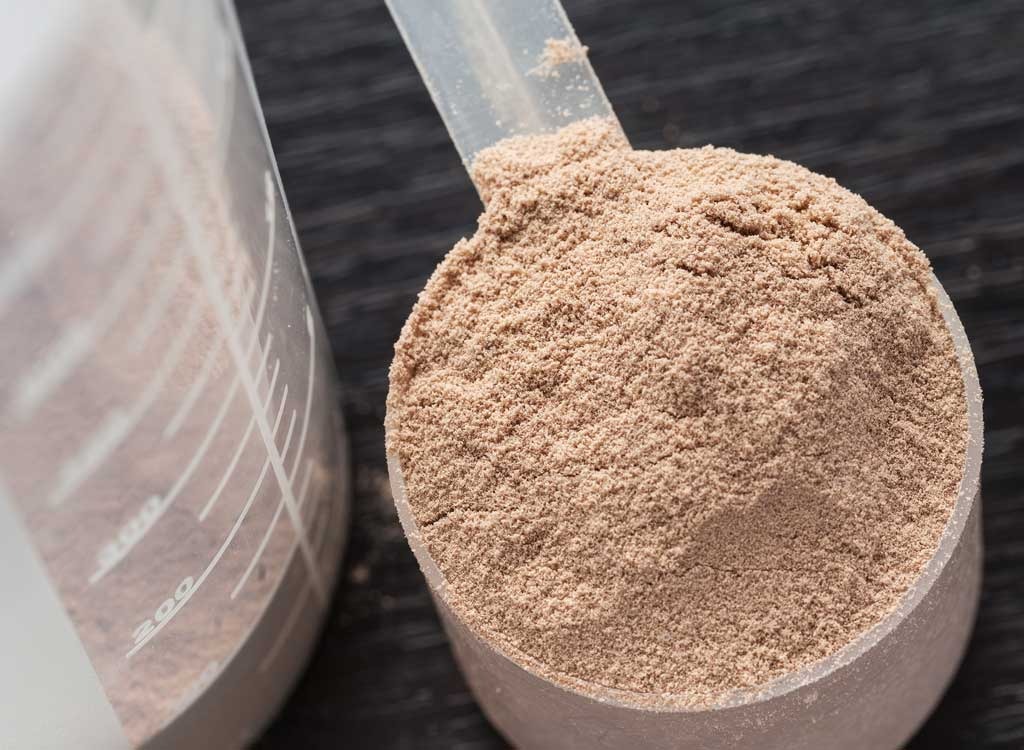
An easy way to cut dairy and probably not even taste it all is to change your protein powder to one that is plant-based instead of whey protein. "Choose a low sugar organic pea, rice, quinoa or blended plant protein powder to add to shakes and smoothies, hot cereals, and more," Ciorciari recommends. The Eat This, Not That! team also did all this research for you already; don't miss our exclusive guide to best and worst protein powders!
Go for the 80/20 Method

If you're eliminating dairy because you're worried about bigger picture health problems, Ciorciari says not to omit dairy from your diet all at once. "If cutting it out all at once is too difficult, maybe try an 80/20 approach where 80 percent of choices are dairy-free and the other 20 percent are better choices," suggests Ciorciari. "I often recommend starting with only 'known' tolerated foods (if any) and making changes for any identified foods known to be problematic. You may also want to avoid trigger foods or foods that are extremely difficult for you to keep portioned. For instance, if cheese is a known trigger, maybe consider a non-dairy swap or choose 'crumbles' of feta or goat cheese as a measure of portion control."
You Can Still Have a Pizza Party
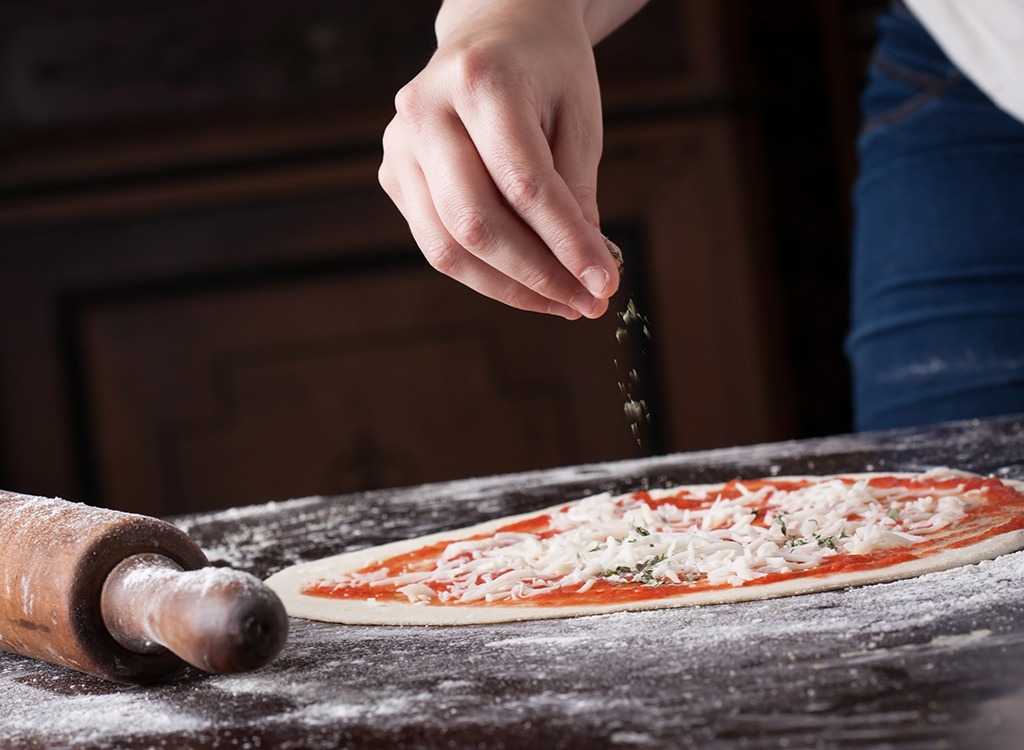
Karena Dawn and Katrina Hodgson of Tone It Up have a brilliant way to enjoy your pizza, even if it is dairy-free. "If you're making a pizza, top a pita bread with oregano, basil, dried chili flakes, tomato sauce and finely shredded coconut flakes," they suggest. "It looks like cheese but provides a fun, nutty flavor." And if Caprese salads are a go-to treat, they say to swap out the mozzarella with small slices of soft tofu, instead.
Use Greek Yogurt Strategically
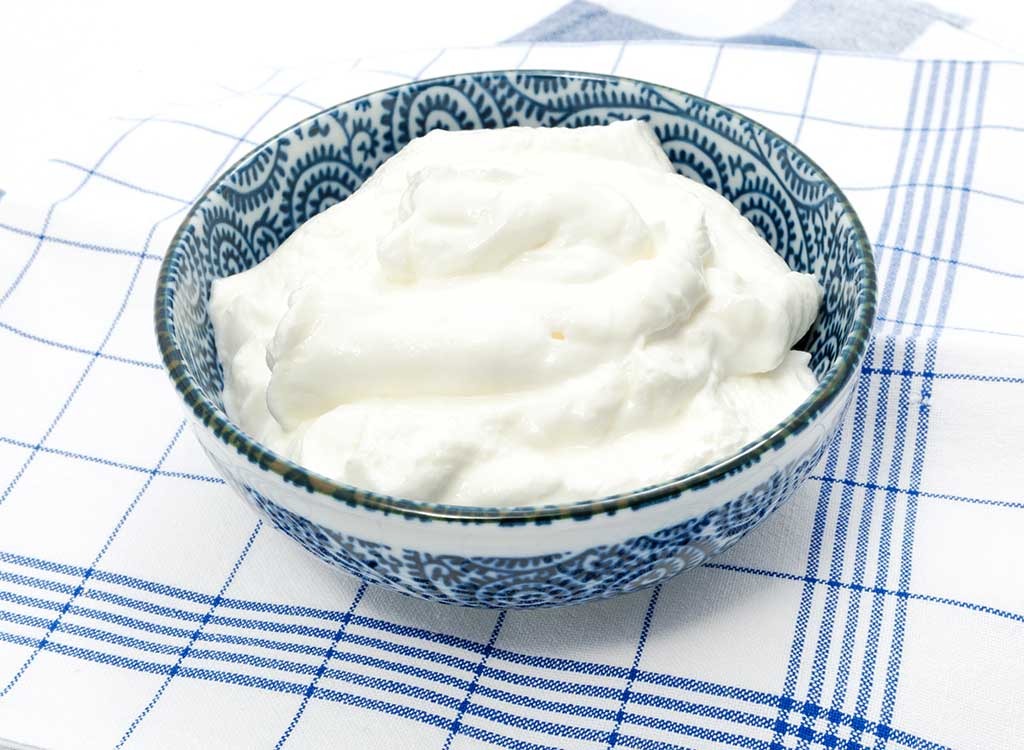
Plain Greek yogurt is a terrific protein-rich food but if you'd like to reduce your dairy intake, consider cutting back on Greek yogurt as a main event. "Instead, incorporate it into your day in smaller amounts," suggests Amy Gorin, MS, RDN, and owner of Amy Gorin Nutrition. "Use it as a replacement for sour cream when eating tacos or using it as a base for a dip, paired with crudité."
Try Magic Miso
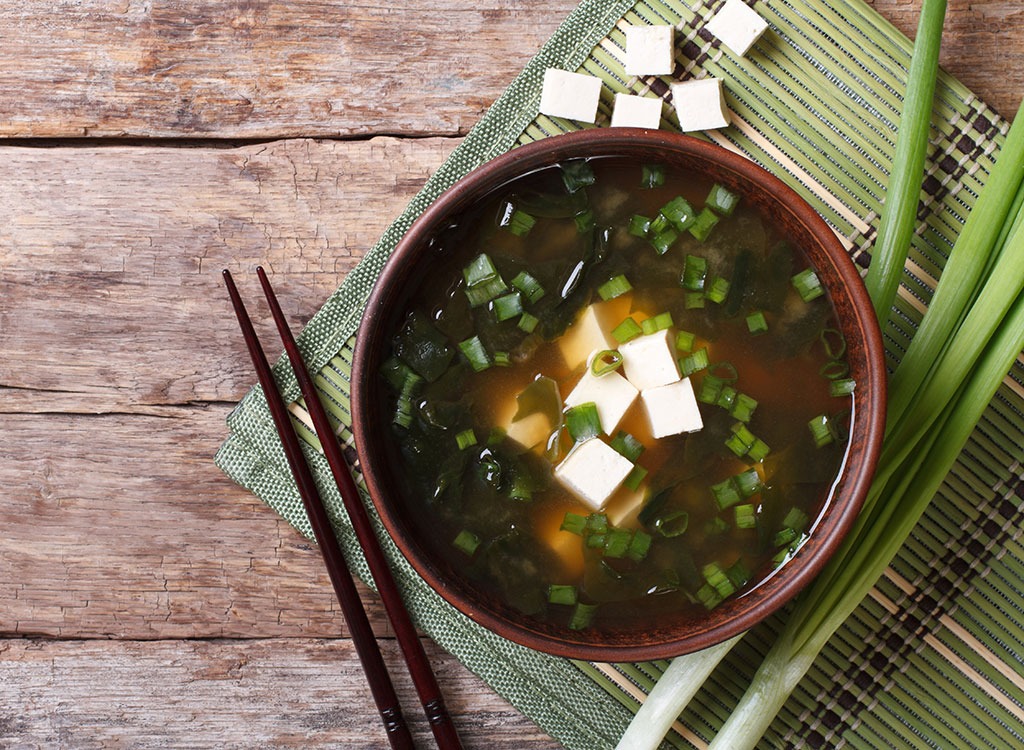
Miso, a fermented food that is rich in umami (also known as the "sixth" taste) is a great replacement for recipes that call for cheese. "Typically, you find umami in animal products, but miso and mushrooms also have it," explains Samantha Elkrief, holistic health coach, and chef. "I use miso in soups, sauces, dressings, and pestos. You can also use it for glazes and marinades."
Don't Forget the Calcium

"Dairy is an excellent source of high-quality protein, calcium, and vitamin D. By choosing to reduce daily dairy consumption, it's important that an individual pays closer attention to his or her calcium intake," says Paul Salter, MS, RD, CSCS. "Calcium plays several crucial roles in the body—namely in bone formation and muscle contraction. Dairy is an excellent source of calcium and is often the 'go-to' recommendation for boosting daily intake. Fortunately, there are several other calcium-rich food options that can be incorporated in place of milk, yogurt, or cheese." So what can you grab instead of dairy for that all-important calcium? Sardines are your top choice with 33 percent of your daily value! For more great options, check out non-dairy calcium-rich foods!
Embrace the Calorie Cutting

"Cutting down excess dairy is a great way to cut out extra 'hidden' daily calories," says Allyson Kramer, author of Naturally Lean! "For example, think about your coffee. Just one tablespoon of heavy cream contains over 50 calories while one tablespoon of almond milk has only three calories. Next time you order a pizza, ask for "no cheese" and top with your favorite veggies. This small change alone will save you around 270 calories per slice!" And another great reason to decrease dairy is to increase the other types of nutritious foods you can enjoy. "Instead of filling up on dairy products, try replacing them with whole foods, such as vegetables, nuts, and beans." Bottom line? Instead of obsessing over the dairy you are missing, embrace the calories that are also being cut—and the new, interesting ways you get to eat! Speaking of cutting calories, here are simple swaps to cut calories that are so easy you can shave thousands of calories from your diet in a week!
